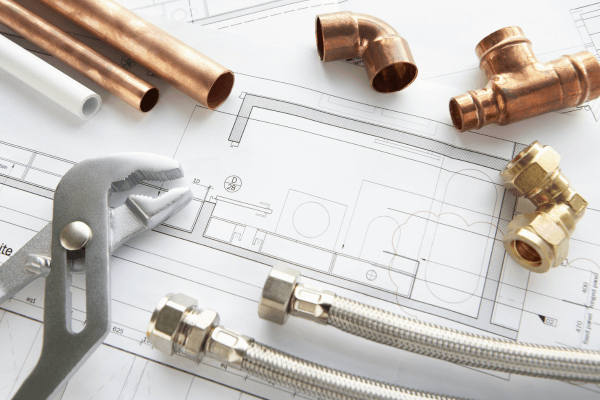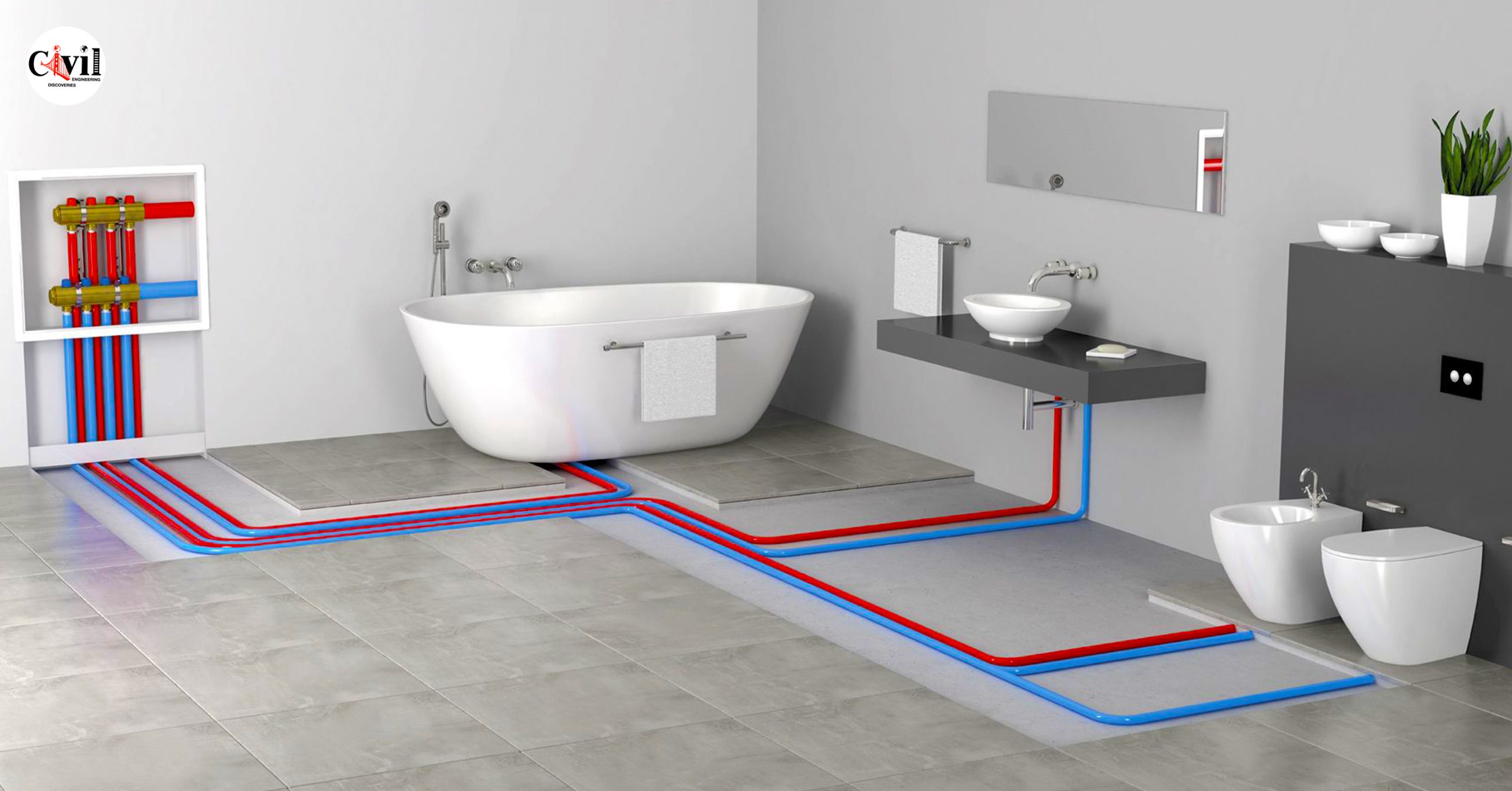Here underneath you can locate lots of dependable insights pertaining to Plumbing Installation 101: All You Need to Know.

Recognizing just how your home's plumbing system works is essential for every property owner. From delivering tidy water for drinking, food preparation, and bathing to securely eliminating wastewater, a well-kept pipes system is vital for your household's wellness and convenience. In this detailed overview, we'll discover the detailed network that composes your home's pipes and offer suggestions on maintenance, upgrades, and handling common issues.
Intro
Your home's pipes system is greater than just a network of pipes; it's a complex system that ensures you have access to tidy water and reliable wastewater elimination. Understanding its components and how they work together can help you prevent costly repairs and make sure everything runs smoothly.
Basic Parts of a Plumbing System
Pipes and Tubing
At the heart of your pipes system are the pipelines and tubes that bring water throughout your home. These can be made from various materials such as copper, PVC, or PEX, each with its benefits in terms of sturdiness and cost-effectiveness.
Fixtures: Sinks, Toilets, Showers, and so on.
Components like sinks, toilets, showers, and bathtubs are where water is used in your home. Understanding how these fixtures connect to the plumbing system helps in diagnosing troubles and intending upgrades.
Shutoffs and Shut-off Factors
Shutoffs manage the circulation of water in your pipes system. Shut-off valves are important during emergencies or when you need to make repair work, permitting you to separate parts of the system without interrupting water flow to the whole residence.
Water System System
Main Water Line
The primary water line attaches your home to the metropolitan water or an exclusive well. It's where water enters your home and is dispersed to different components.
Water Meter and Pressure Regulator
The water meter measures your water use, while a stress regulatory authority guarantees that water moves at a secure stress throughout your home's plumbing system, preventing damage to pipelines and components.
Cold Water vs. Hot Water Lines
Recognizing the distinction between cold water lines, which supply water straight from the major, and hot water lines, which carry warmed water from the hot water heater, helps in repairing and preparing for upgrades.
Drainage System
Drain Piping and Traps
Drain pipelines carry wastewater away from sinks, showers, and toilets to the sewage system or septic tank. Catches stop sewer gases from entering your home and additionally trap debris that can trigger obstructions.
Ventilation Pipelines
Air flow pipes permit air right into the drainage system, avoiding suction that can slow down drainage and create traps to vacant. Appropriate ventilation is essential for keeping the stability of your pipes system.
Value of Proper Water Drainage
Guaranteeing proper drain prevents back-ups and water damage. Regularly cleaning up drains pipes and preserving catches can avoid costly fixings and extend the life of your pipes system.
Water Heating Unit
Sorts Of Water Heaters
Hot water heater can be tankless or conventional tank-style. Tankless heating systems heat water as needed, while tanks store warmed water for immediate use.
Just How Water Heaters Link to the Pipes System
Understanding how water heaters attach to both the cold water supply and hot water distribution lines aids in diagnosing concerns like not enough hot water or leakages.
Upkeep Tips for Water Heaters
On a regular basis purging your hot water heater to get rid of sediment, checking the temperature level setups, and inspecting for leakages can prolong its lifespan and enhance power efficiency.
Typical Pipes Concerns
Leaks and Their Causes
Leakages can occur due to aging pipes, loosened installations, or high water pressure. Dealing with leakages promptly prevents water damages and mold and mildew growth.
Obstructions and Blockages
Clogs in drains and commodes are often triggered by purging non-flushable things or a buildup of grease and hair. Utilizing drainpipe displays and being mindful of what drops your drains can prevent blockages.
Indications of Pipes Troubles to Watch For
Low tide stress, slow drains, foul odors, or abnormally high water bills are signs of potential plumbing issues that must be resolved quickly.
Plumbing Maintenance Tips
Routine Assessments and Checks
Arrange yearly pipes assessments to catch issues early. Search for indications of leaks, rust, or mineral accumulation in faucets and showerheads.
DIY Maintenance Tasks
Simple tasks like cleaning faucet aerators, checking for toilet leaks using dye tablets, or insulating revealed pipelines in chilly climates can prevent major plumbing concerns.
When to Call a Specialist Plumbing Technician
Know when a plumbing issue needs expert knowledge. Trying complex repair services without appropriate expertise can bring about more damages and higher repair prices.
Upgrading Your Pipes System
Reasons for Updating
Updating to water-efficient components or replacing old pipelines can enhance water quality, minimize water bills, and boost the value of your home.
Modern Pipes Technologies and Their Benefits
Explore innovations like clever leak detectors, water-saving bathrooms, and energy-efficient hot water heater that can save cash and lower environmental influence.
Cost Factors To Consider and ROI
Determine the ahead of time expenses versus long-term cost savings when considering pipes upgrades. Several upgrades pay for themselves via decreased utility costs and fewer repairs.
Environmental Effect and Conservation
Water-Saving Fixtures and Devices
Installing low-flow taps, showerheads, and toilets can substantially lower water usage without giving up performance.
Tips for Decreasing Water Use
Simple behaviors like repairing leakages quickly, taking much shorter showers, and running complete loads of laundry and meals can preserve water and lower your energy costs.
Eco-Friendly Plumbing Options
Think about lasting pipes materials like bamboo for floor covering, which is durable and eco-friendly, or recycled glass for counter tops.
Emergency situation Preparedness
Actions to Take Throughout a Plumbing Emergency
Know where your shut-off shutoffs lie and just how to turn off the water system in case of a ruptured pipeline or major leak.
Relevance of Having Emergency Contacts Helpful
Keep get in touch with info for local plumbings or emergency situation services conveniently offered for quick response during a pipes crisis.
DIY Emergency Situation Fixes (When Suitable).
Momentary solutions like utilizing air duct tape to patch a dripping pipe or placing a pail under a leaking faucet can minimize damage up until a professional plumber arrives.
Verdict.
Comprehending the anatomy of your home's pipes system equips you to maintain it efficiently, saving money and time on repair services. By complying with routine maintenance regimens and staying informed concerning modern-day pipes innovations, you can ensure your pipes system operates efficiently for many years to find.
HOW YOUR PLUMBING SYSTEM WORKS
Which Pipes Do What?
- Blue lines = fresh water supply entering the building
- Red lines = hot water supply entering the building
- Grey lines = pipes carrying waste away from the building and venting pipes carrying gases away from the building (through the roof)
YOUR MAIN PLUMBING SYSTEMS
There are two main plumbing systems that support your home s basic plumbing needs one that brings clean water into your home, and one that sends dirty water away from your home. Connected to the toilet, bath, shower, and other faucets in your home, these two systems keep your water flowing in the right directions.
ACCESSING FRESH WATER
Fresh and clean water is brought into your home through the main water supply line . Filtered through one pipe, this water is pressured to flow into the various fixtures in your home at any given time.
This water can be sourced from a well located on your property, a pond or river (mostly cottages), or, as in most cases, from the city s municipal water treatment centre. However, it is important to note that water that is untreated, such as the water siphoned from ponds or rivers, may not be safe to drink. Personal water supplies always need to be treated for hardness and contaminants before consumed.
MUNICIPAL WATER SUPPLIES
- Improve taste and odour
- Remove sediment
- Eliminate hardness
- Reduce chlorine
COLD WATER SUPPLY VS. HOT WATER SUPPLY
Cold water flows into your home or building through the service line, which then distributes hot or cold water to your fixtures. This line is most commonly run through a central column that runs floor to floor. Hot water runs in short and straight pipes as the longer the pipeline, the more heat that will be lost in the transfer. Having shorter pipes also allows residents to access hot water more quickly.
WASTE WATER SYSTEM
Your wastewater system is divided into two parts pipes that send wastewater away from your home and venting pipes that send sewer gas away from your home. Sewage water travels through pipes that flush the water and waste towards local sewers that are operated and managed by your city or town. Most sewer systems rely on gravity to move the wastewater to where it needs to go.
The further away from your toilet or sink, the larger wastewater pipes become. This allows for waste to be disposed of from various parts of your home or business at once without pipe blockages. The angle and flow of these pipes are also essential for keeping your waste pipes clear of build up.
https://harrisplumbing.ca/how-your-home-plumbing-system-works/

We hope you liked our section on The Inner Workings of Your Home's Plumbing. Many thanks for taking the time to browse our short article. Remember to take the time to promote this write-up if you liked it. I enjoy your readership.
Browse Website
Comments on “Examining Your House's Plumbing System Anatomy”